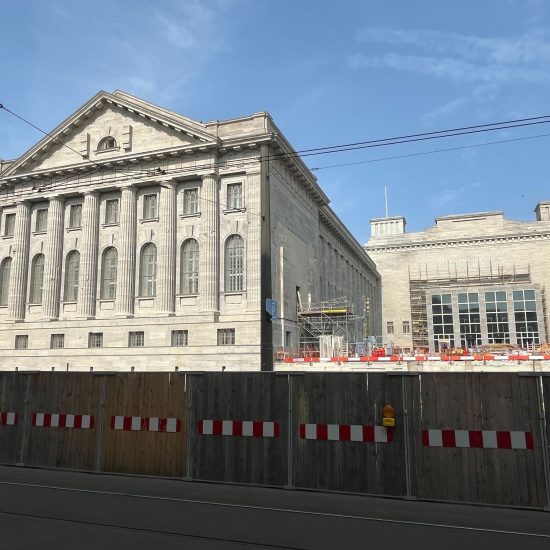The Pergamonmuseum, the largest of the five historical institutions in Berlin’s famous museum complex, has been closed entirely since last October as part of a massive refurbishment and expansion project that began in 2013. Although its scheduled reopening is already a long ways away, slated for 2037, a year-long investigation by the German weekly newspaper Der Spiegel published last month found that it could potentially be pushed back even further to 2043, adding to a series of delays that have riddled the more than €1.5 billion (~$1.65 billion) project.
Minutes from internal meetings and construction files from the last 25 years revealed a pattern of “planning chaos” in the form of contractual disputes, engineering mishaps, poor coordination, and insufficient budgeting, according to the lengthy Der Spiegel report, which referred to the project as “Das Pergamonster” and compared the delay to the Metropolitan Museum of Art closing for a quarter of a century.
A representative for the Prussian Cultural Heritage Foundation (SPK), which oversees the museum, told Hyperallergic that the project is still on track to fully resume operations in 13 years — nearly 40 years after its initial projected completion date of 2010.

The representative stated that the museum will reopen its central section and north wing in 2027; both were closed in phases around a decade ago as part of the first construction phase. The museum is currently clearing movable museum objects from its south wing to prepare for the second stage of the project, which will renovate this area and erect a new fourth wing.
“Risk calculation is part of the building plans,” the SPK representative said in response to Hyperallergic‘s inquiry about whether the construction timeline could be pushed past 2037. He added that lessons from the first phase of the project will be taken into consideration.
Located on Museumsinsel Berlin, a UNESCO World Heritage site, the Pergamonmuseum is home to a vast archaeological collection of Hellenistic, Babylonian, and Islamic antiquity, some of it disputed, including massive reconstructions of ancient architectural structures which have been incorporated into the building itself. Built between 1910 and 1930, the museum has withstood severe damage and looting at the end of World War II and during the Cold War, when Museumsinsel Berlin was situated in East Berlin.

In 1999, after the reunification of Germany, SPK released a massive refurbishment plan for the quintet of historical museums. Since it was first announced, the project to restore and modernize the complex has been increasingly hindered with delays and mounting costs, with the Neues Museum opening three years later than initially announced and the new entrance building completed 14 years past schedule at a “cost almost twice as much as promised,” Der Spiegel reported. Work has also not yet begun on the Altes Museum, which is scheduled for renovation after the Pergamonmuseum.
The SPK representative told Hyperallergic that costs to renovate the Pergamonmuseum’s entire structure were initially estimated to be €385 million in 2009 (~$535.2 million at the time), “but this served only as a basis for all further plans.”
By 2017, construction costs had exceeded the 2009 budget projections, increasing to €489 million (~$552.6 million). For the second phase of construction, costs of €722.4 million (~$800.5 million) have been approved, more than tripling the original projections.

“In addition, costs for risks and construction price increases have been calculated to potentially sum up to around €300 million,” a representative for the Federal Office for Building and Regional Planning, the governmental body that supervises German building construction projects, confirmed to Hyperallergic, adding that the agency anticipates that the entire project will be completed in 2037.
The recent report about the Pergamonmuseum’s construction timeline overlaps with growing international contestation over the provenance of its collections. The Berlin museum has long refused to respond to calls from countries including Turkey and Egypt to return high-profile antiquities including its namesake altar and a bust of the 18th-dynasty Egyptian queen Nefertiti.




